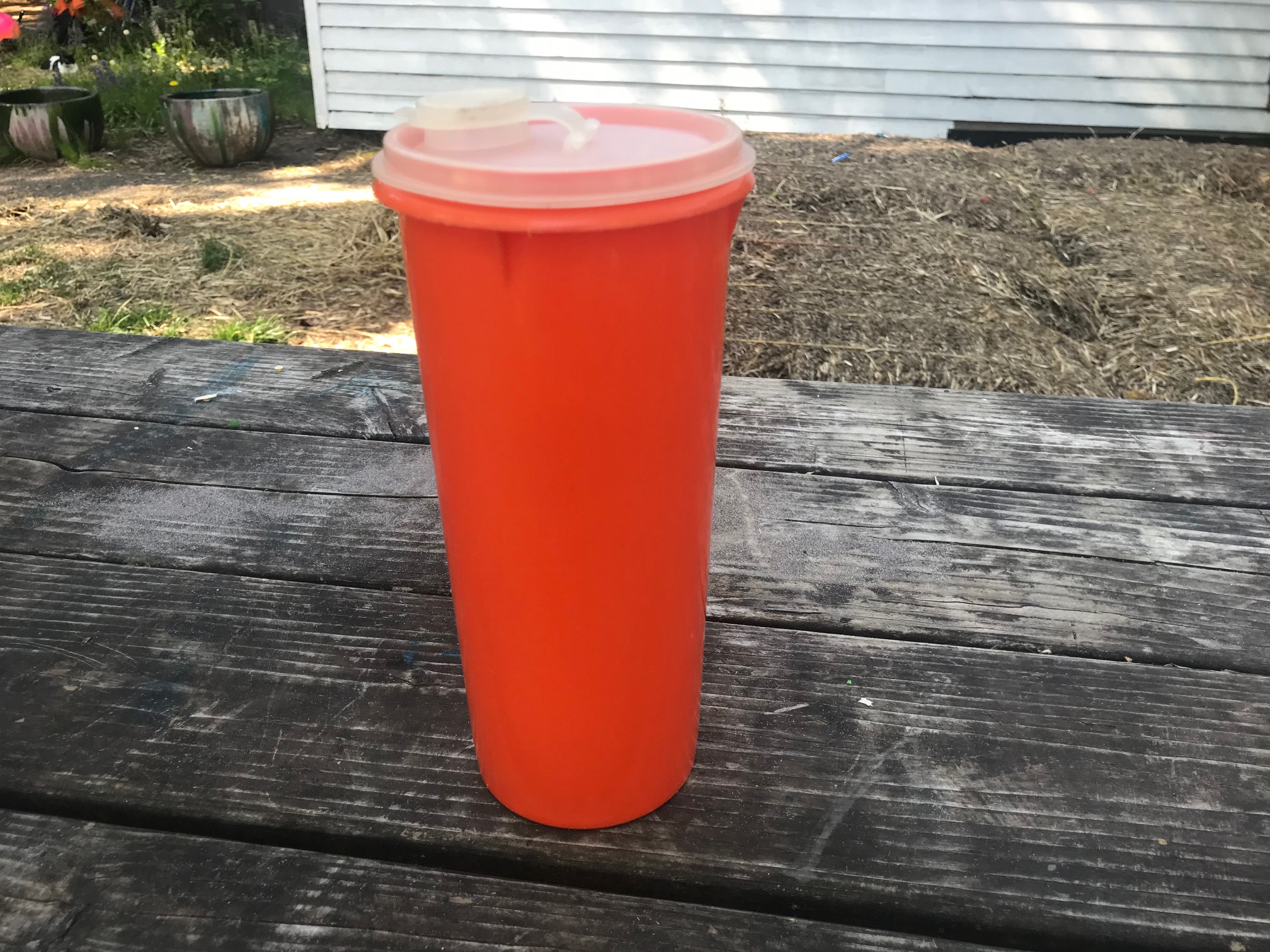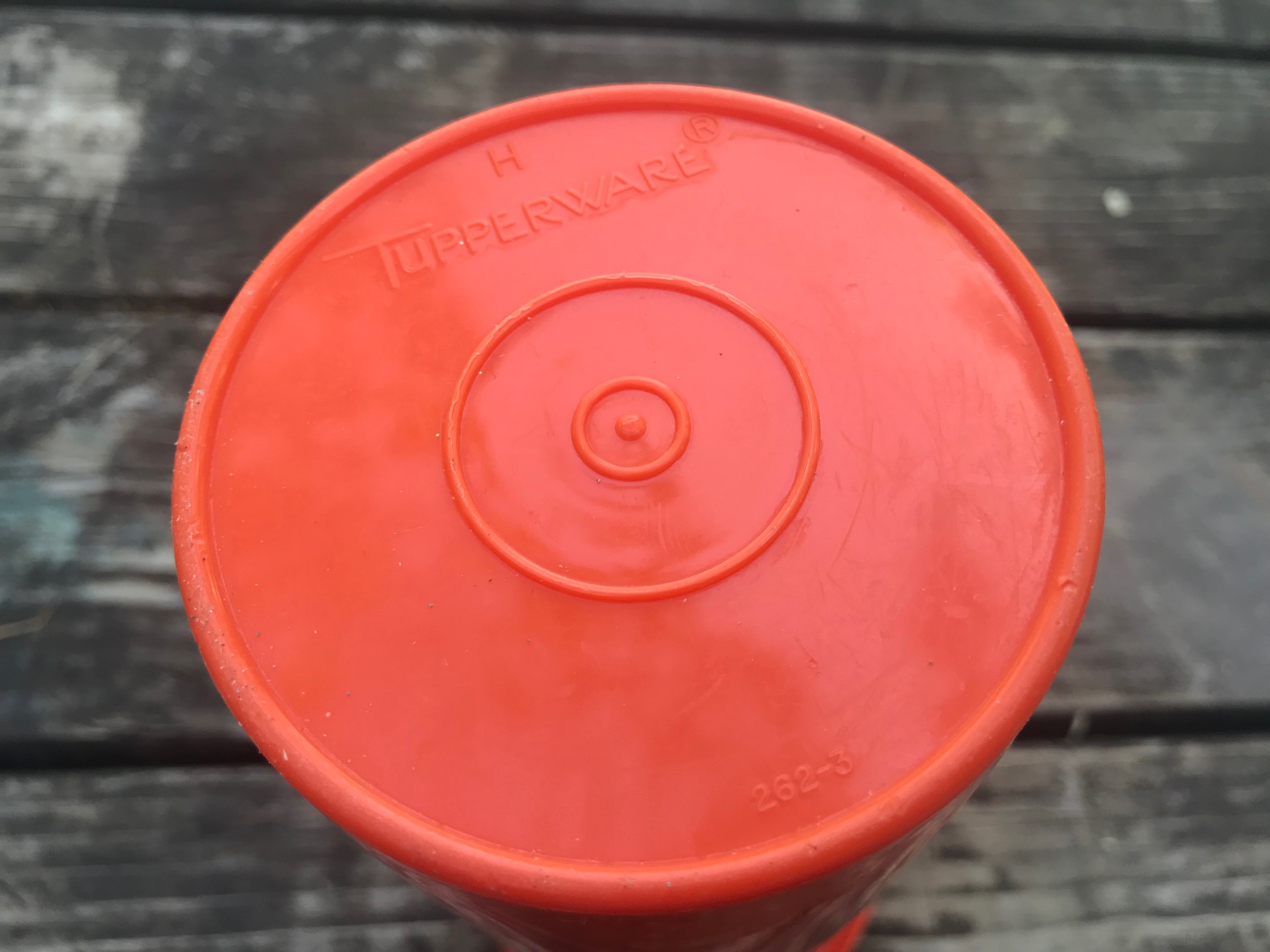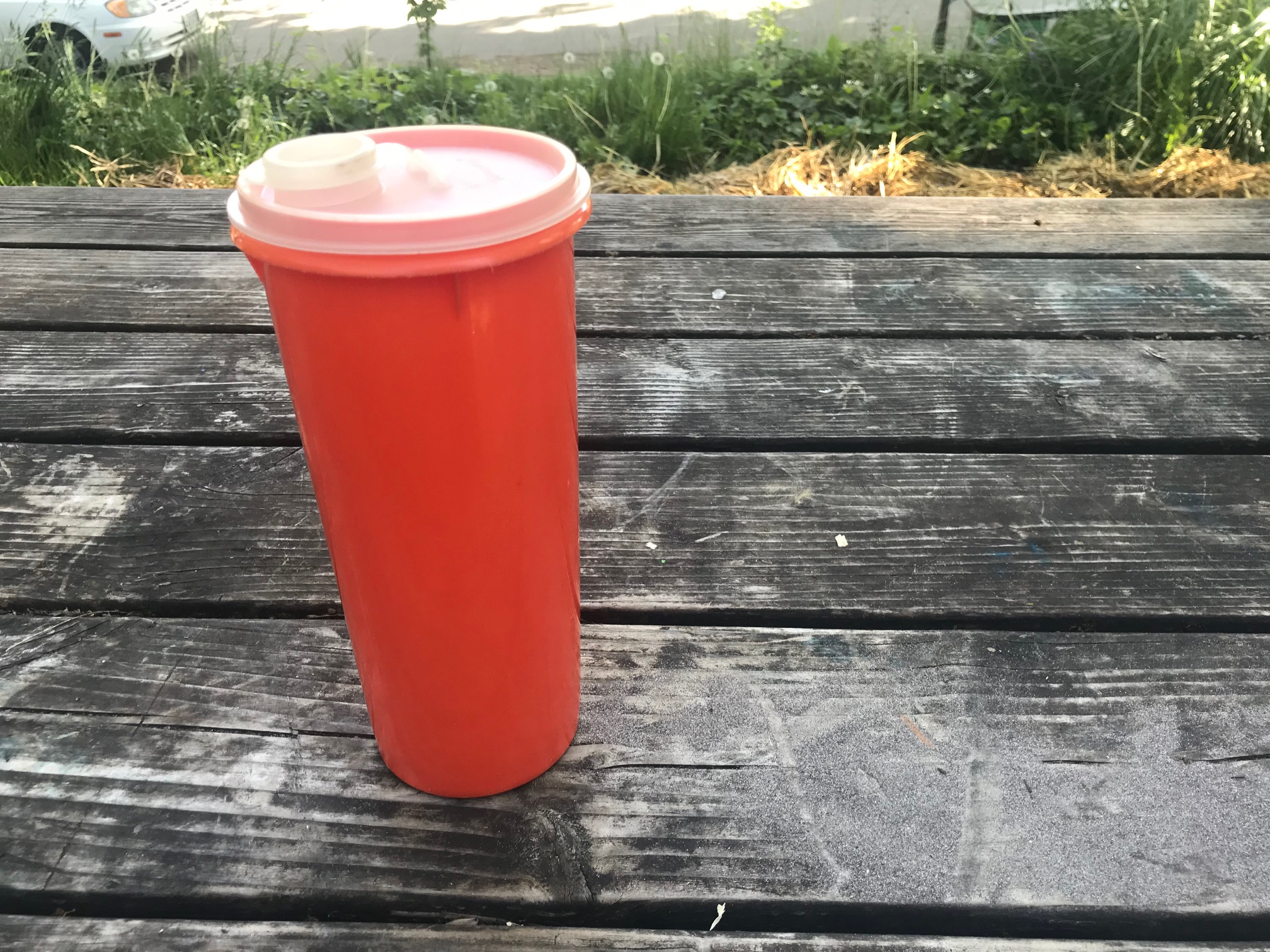Want some poison with your lemonade? Vintage Tupperware pitcher: 18 ppm Lead, 225 ppm Cadmium, 30 ppm Mercury.
When tested with an XRF instrument this vintage Tupperware brand orange plastic skinny juice / lemonade pitcher had the following readings:
Orange Plastic of the Container:
- Lead (Pb): 18 +/- 4 ppm
- Cadmium (Cd): 225 +/- 11 ppm
- Mercury (Hg): 30 +/- 7 ppm
- Arsenic (As): Negative / Non-Detect
- Barium (Ba): 438 +/- 87 ppm
- Chromium (Cr): Negative / Non-Detect
- Antimony (Sb): Negative / Non-Detect
- Selenium (Se): 21 +/- 4 ppm
- Zinc (Zn): 129 +/- 10 ppm
- Copper (Cu): 20 +/- 12 ppm
- Nickel (Ni): 16 +/- 8 ppm
- Iron (Fe): 58 +/- 18 ppm
- Vanadium (V): 233 +/- 143 ppm
- Titanium (Ti): 1,620 +/- 249 ppm
Metals not listed were not detected by the XRF instrument.
To see more of the vintage Tupperware items I have tested, please click this link.
For context: the amount of Cadmium (Cd) considered unsafe in a newly manufactured item today in Denmark is 75 ppm or higher. The State of Washington considers 40 ppm Cadmium to be unsafe. As a result, by current modern standards this item should not be considered safe, especially for food use purposes [not to mention the presence of Lead and Mercury + the fact one would normally store acidic beverages in a container like this – making any toxicants present more prone to leaching.]
To learn more about XRF testing, click here.
While the degree to which these vintage plastic food-use items may leach toxicants into the food is an unknown (because no-one has paid to study that as there is no financial benefit to anyone to do so!) – as with many other companies who are trying to deflect blame for potential toxic exposure to their customers who purchased their products historically, Tupperware has stated (to some of my readers who have made inquiries) that they have always complied with or exceed all government regulatory standards for their products. This is all well and good, except for the fact that, unfortunately, when this was manufactured there were no limits on total content of heavy metals (as detectable by XRF technology) in kitchenware. While some of the yellow vintage Tupperware brand items have tested negative (non-detect) for Lead your average consumer (you) cannot tell by simply looking which items might have Lead, Arsenic, Mercury and Cadmium and which might be free of these heavy metals.
As a result, I would recommend not using this item or any other vintage Tupperware items for any food use purposes. Here’s my post about disposing of items that test positive for high levels of toxic heavy metals.
For those who ask “What is vintage?” – generally vintage refers to items 20 years old or older. It seems (based on the testing I have done to date) that the Tupperware items that are testing positive for high levels of toxicants are primarily those from the 1980s, although I understand that by Tupperware’s own admission – any products made prior to 2010 may also have unsafe levels of BPA. Here is a nearly complete image set of all of the pages from a 1980s Tupperware catalog for you to look through to help you identify potentially concerning items.
Takeaway: If you must use plastics in your kitchen (and Tupperware specifically) please consider only using post-2010 pieces – and for other brands please look for labeling that specifies “BPA Free”.
If you work with or for Tupperware (or if you are a regular customer), please consider approaching Tupperware and asking them to address this concern (for heavy metals found in their vintage pieces) in a public statement. They have not yet done this since I brought the concern to the attention of the public in March of 2019 (with this original post about the yellow measuring cups) and the only response I have received as a result of my inquires can be seen on this link.
Tamara Rubin
#LeadSafeMama
Mother of Lead-poisoned children.
To learn more about my story, please watch this 2.5 minute video: link.


Never Miss an Important Article Again!
Join our Email List




